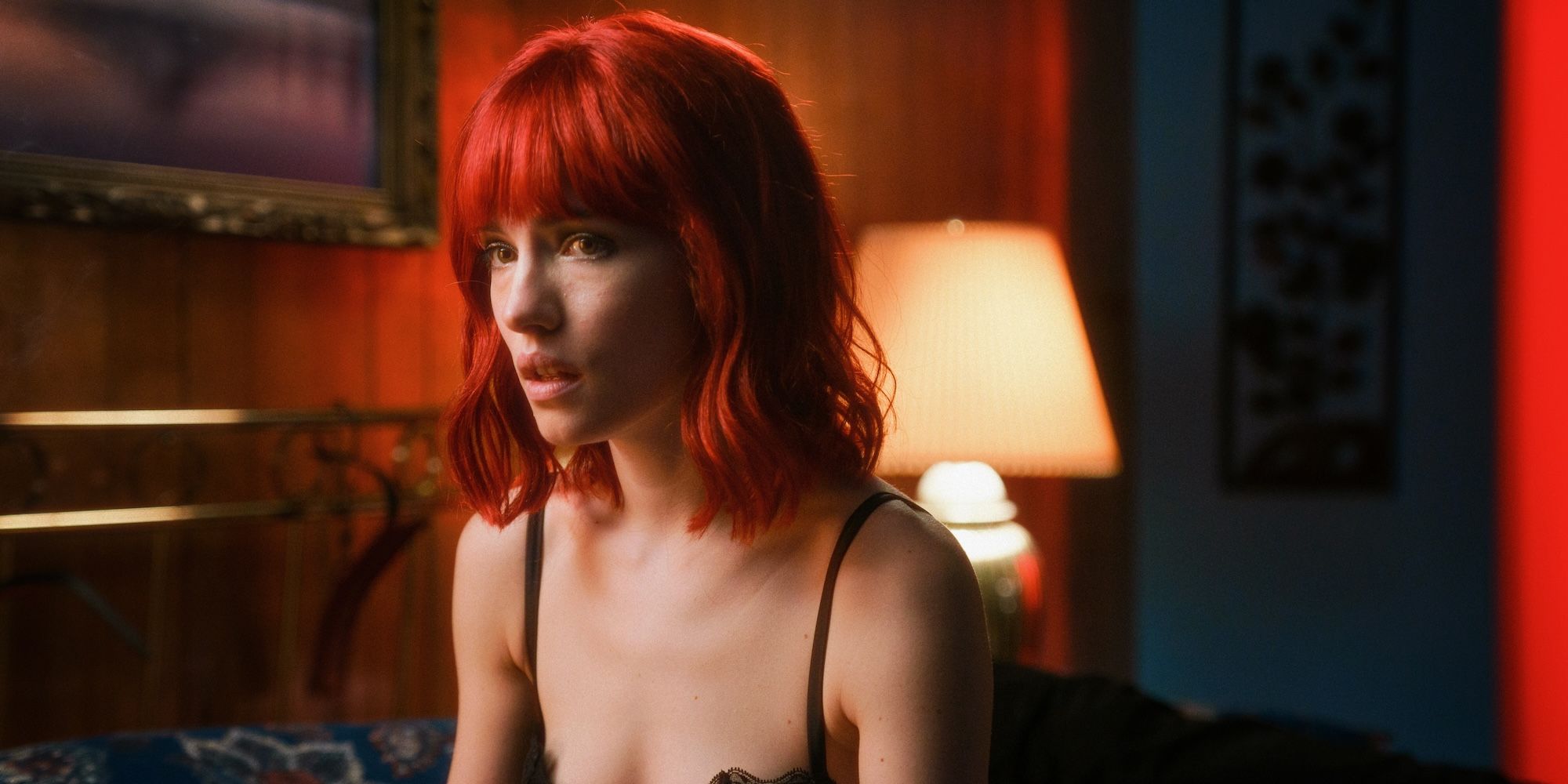Willa Fitzgerald is at least impressive in JT Mollner’s Strange Darling, a horror-thriller about a one-night stand gone wrong, leading to a serial killer going on a murder spree through a Northwest mountain setting. The movie has the wrong priorities thematically. Fitzgerald stars as “the Lady” and Kyle Gallner as “the Demon,” two strangers passing in the night who reveal how quickly one can lose control. Strange Darling is an effectively disturbing movie, labeled as an erotic thriller, which visualizes some interesting themes even if it distracts from them.
Strange Darling’s Non-Linear Narrative & Soundtrack Amps Up Thrills
Strange Darling’s structure takes after Kill Bill, with even more scrambling of the timeline to conceal information from us. This technique does exactly what it is supposed to do. It contributes to tension and thrills as we piece together the circumstances that led to what is depicted in the first 10 minutes of the movie. Strange Darling also features some strong soundtrack choices, from a broken, electric score to hype up chase scenes to the juxtaposition of a dreamy rock song during other sequences.
Strange Darling’s structure takes after Kill Bill, with even more scrambling of the timeline to conceal information from us.
The movie also plays with color a lot. Everyone will probably notice all the red in the first few minutes, with both main characters wearing red and the Lady driving a red car. In contrast, the scene from before they go to bed together is cast in blue, signaling a completely different environment. Indeed, the careful conversation of this scene is one of two moments in the movie most important in helping us interpret the rest. Strange Darling opens with a vignette from this scene, of the Lady asking the Demon a pointed question which drives the whole story.
Strange Darling’s Performances Strengthen Its Most Visceral Moments
Strange Darling is not afraid to show the most disturbing moments of this scenario, namely the bloody wounds and the complete terror and desperation of the people involved. Fitzgerald’s flawless performance is what carries this, although Gallner excels at being appropriately creepy. Barbara Hershey and Ed Begley Jr. are inexplicably in this movie, as a couple living off the grid with whom the Lady takes shelter. However, their enigmatic personas and shocked reactions are effective, and it’s not as though either of these actors is bad.
Another section of the movie involves the BDSM sex scenes between the Lady and the Demon, which characterizes their relationship as inherently volatile and dangerous. These scenes are colored by our knowledge that they are watching a serial killer movie, despite the occasional moments of ethereal attraction. Fitzgerald, in particular, is mysterious and contemplative when they take a break for conversation, adding to her character when we only see flashes of her life.
Strange Darling’s Discourse Veers Away From The Psychology Of A Serial Killer
Despite its technical perfection, aesthetic strength, and clever structure that fosters intrigue, Strange Darling is baffling when it comes to making an ultimate point. It is supposed to be a diatribe on how a serial killer can become desperate too; how their cruelty exists alongside survival instincts and a desire for freedom. However, too many other narrative choices that anyone would have realized were going to provoke a reaction distract from this. It is made even more confusing by the movie opening with a claim of realism.
Despite its technical perfection, aesthetic strength, and clever structure that fosters intrigue, Strange Darling is baffling when it comes to making an ultimate point.
The serial killer in the American Northwest only a few years ago doesn’t strictly exist; it amounts to a narrative trick for more horror. At best, the movie is inspired by a serial killer from the 1990s, while the exact sequence of events is a work of fiction. So what is this movie trying to say? That a woman can fall to the ground crying and get away with anything? That corrupt police officers don’t exist because they are just being cautious? That one out of two women will always trust another woman and that makes them fools?
Mollner’s comments (via The Direct) on the audience “deciding for [themselves] how much truth [there is]” only reinforce that this is fiction, with story choices making a specific point about how people’s presumptions put them in danger. Mollner also said (via THR) that he was “never intentionally trying to fool the audience,” but this is the function of the entire movie. Strange Darling knows that we are going to assume one thing and derives tension and plot twists from that, albeit perfectly. However, with the claim of realism, it’s trying to force a lesson that is much more complicated.
Strange Darling is now playing in theaters. The film is 97 minutes long and rated R for strong/bloody violent content, sexual material, drug use and language.

